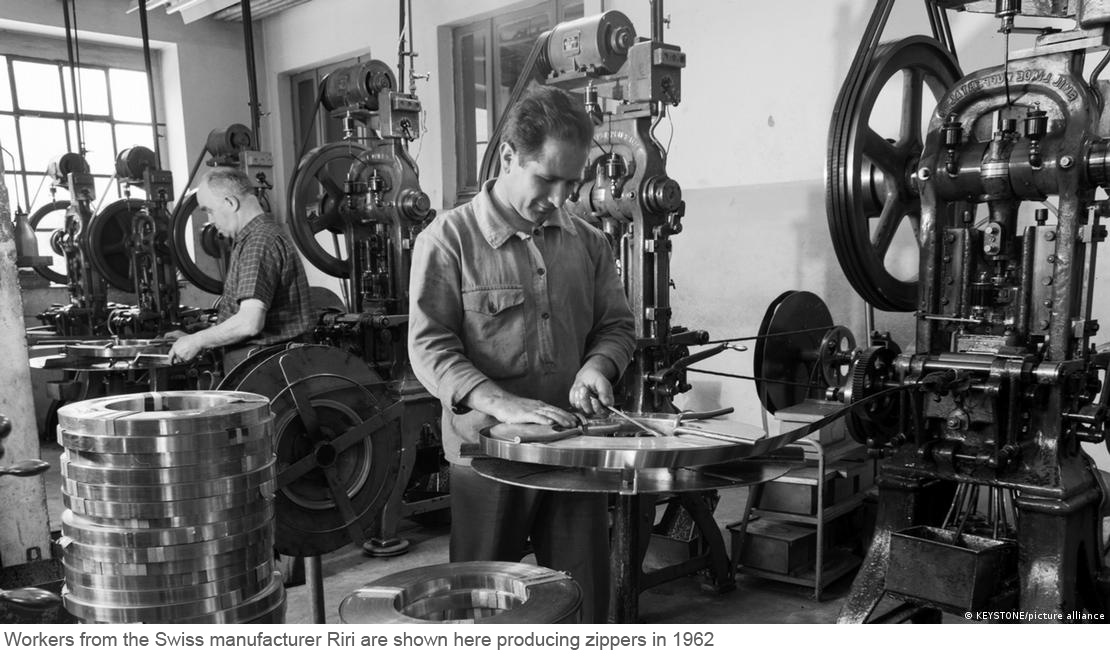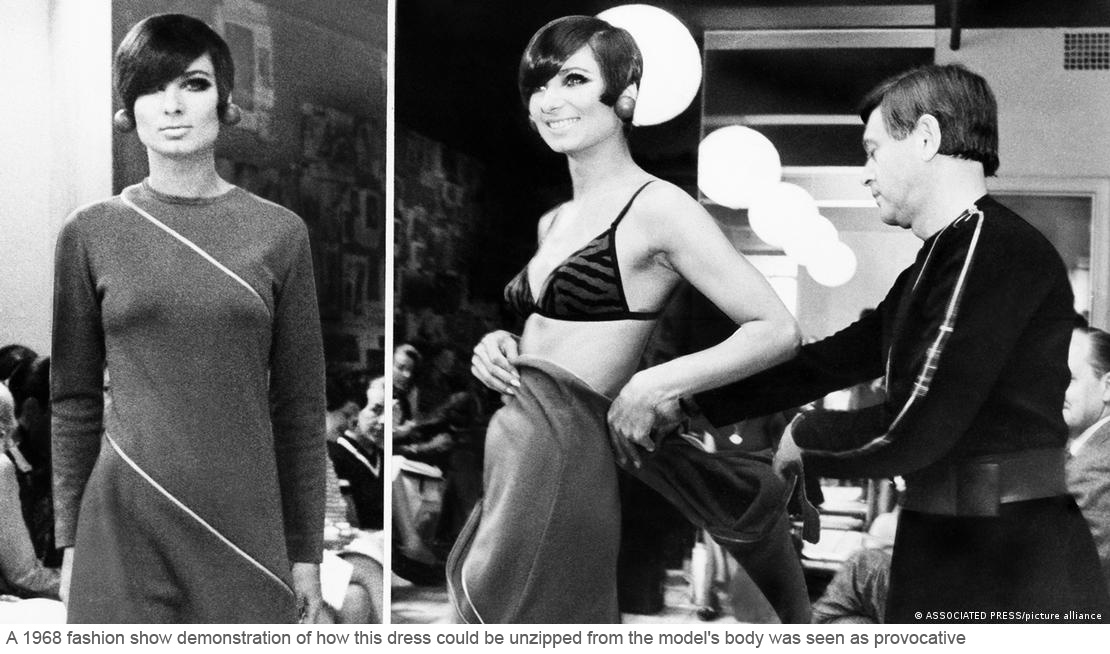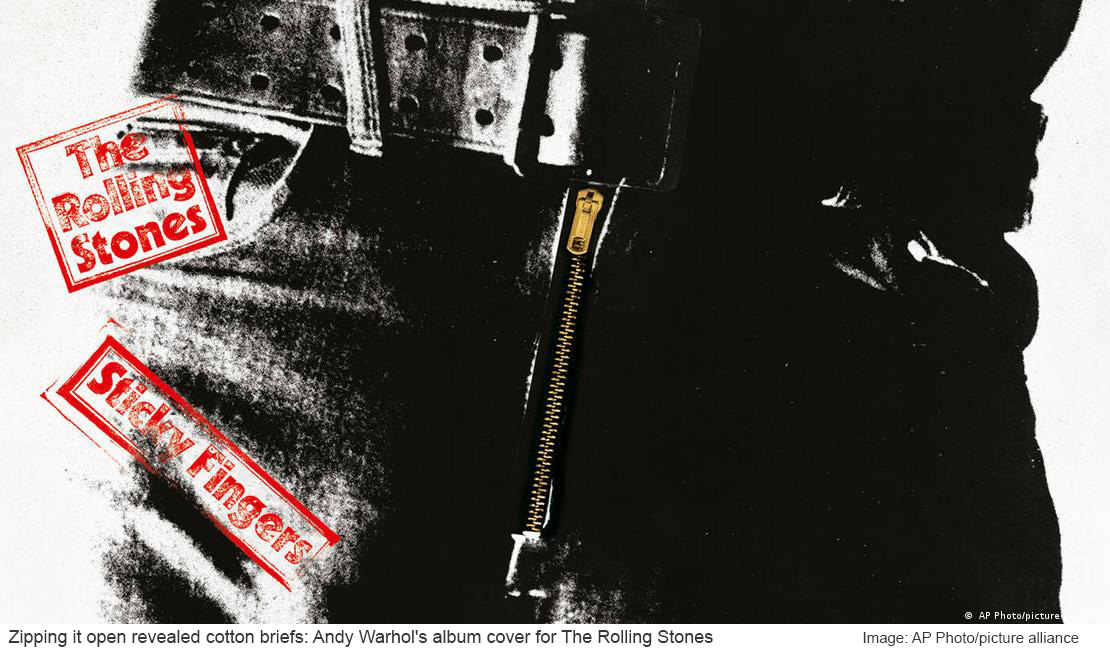
Category: TRIMS
Country: United States
Torsten Landsberg
August 29, 2023
Even though it's a simple everyday device, the zipper contributed to the iconic style of Hollywood rebels Marlon Brando and James Dean, flew to the moon and led to the censorship of an album by The Rolling Stones.
It has perhaps lost in popularity through the COVID pandemic, as people working from home often prefer elastic waistband pants. But whenever we are required to get out of the house, it reappears everywhere on our coats, trousers and bags: the zipper.
Work-from-home style isn't the first challenge the zipper has faced throughout its 130-year history, with button-fly jeans regularly making a fashion comeback. And everyone knows how frustrating it can be when a zipper gets stuck.
But 130 years after its patent was registered, the zipper has defended its title as an ultimate fashion accessory.
How it all started
Early models of a similar clothing fastener were launched as early as the 1850s. But they rusted and often opened unintentionally. They were awkward to use and too expensive.
An American traveling salesman, Whitcomb Judson, developed an improved version of the fastener in 1890, receiving a patent for his "clasp locker" on August 29, 1893. Shortly after, he presented his invention at the Chicago World's Fair.
Judson's clasp locker was designed as an alternative to long shoelaces on boots. But apparently, not everyone found tying shoes tedious, and his invention was met with widespread indifference.
US Army becomes main client
It took another decade for Judson and his partners to relaunch the device after improving its technology. Other engineers continued to optimize the invention, including in Europe.

When serial production of the mechanism started, the US military became one of its first bulk buyers, integrating zippers into the troops' clothing and gear during World War I.
It wasn't until the late 1930s that the invention finally revolutionized fashion.
As was often the case for fashion innovations at the time, the zipper was initially used only for men's clothing, as it was deemed inappropriate for women to wear clothes that could be taken off quickly.
When finally applied to women's clothes, zippers were placed discretely on the side instead of in the crotch area to avoid drawing attention to a woman's intimate parts.
Model at left wears a tunic with zipper looking like a thin stripe around it. At right, a man zips round and round unveiling the model in a bikini.Model at left wears a tunic with zipper looking like a thin stripe around it. At right, a man zips round and round unveiling the model in a bikini.

In Germany, mostly men wore fly trousers until the late 1960s when jeans became accepted as a genderless clothing item.
But to this day, many manufacturers still design pants differently according to gender: Zippers in women's fashion are traditionally zipped up with the left hand; for men's clothes, with the right hand. It's a legacy of the pre-zipper era when button plackets in women's fashion were designed for wealthy ladies dressed by their maids.
Now, this distinction hardly exists with unisex clothing, even though it is still the norm for shirts, blouses and suits.
Zippers on the moon
Initially made of metal, zippers were later made of other materials, such as nylon and plastic. Manufacturers have also developed zippers that can open from both ends.
But beyond the technological improvements, the basic principle has remained the same: The zipper is made of two flexible strips of fabric with rows of metal or plastic teeth that fasten by hooking into each other when pushed together by a slider.
At the end of the 1950s, US space agency NASA also contributed to zipper technology when developing its high-pressure space suits, designing an air-tight sealed zip that could withstand pressure. They were used during the Apollo 11 mission in July 1969, the first moon landing.
Three astronauts, the crew of the Apollo 11 lunar landing mission, pose for an official photo, smiling in the spacesuits, holding their helmets, with depiction of the moon behind them.Three astronauts, the crew of the Apollo 11 lunar landing mission, pose for an official photo, smiling in the spacesuits, holding their helmets, with depiction of the moon behind them.

However, the suits were not suitable for longer ventures into space, as are common nowadays, which is why NASA discarded the zipper. Yet fire-resistant and chemical-resistant successors to the NASA technology are still in demand today, notably in gear for fire departments and chemical plants.
Rebellion and pop art
The zipper has also found its way into pop culture. Hollywood rebels Marlon Brando in "The Wild One" (1953) and James Dean in "Rebel Without a Cause" (1955) sported an iconic style, casually wearing their jackets half-zipped up.
Even in 1971, the zipper still managed to spark controversy. That year, The Rolling Stones released their legendary album "Sticky Fingers," whose album cover was designed by pop art icon Andy Warhol.
Cover of the Rolling Stones album 'Sticky Fingers', close up of crotch area of a pair of jeans with a metal zipper. Cover of the Rolling Stones album 'Sticky Fingers', close up of crotch area of a pair of jeans with a metal zipper.

It featured an actual metal zipper. Although it didn't reveal any genitalia when unzipped, just relatively harmless cotton briefs, it was seen as scandalous at the time.
In Spain, Franco's regime censored the "obscene" album, which led to an alternate version being designed, depicting a woman's fingers crawling out of a tin can of syrup — which many find far more disturbing than zip-up pants. The track "Sister Morphine" also had to be removed from "Sticky Fingers" for the Spanish market, even though almost all of the album's tracks also revolved around drugs, from "Brown Sugar" to "Bitch."
A person wearing a blue uniform and cap puts their finger on one the red zippers lined up in front of them on assembly line.A person wearing a blue uniform and cap puts their finger on one the red zippers lined up in front of them on assembly line.

Today, 130 years after it was first patented, the zipper is here to stay. Japan's YKK group, the world's largest zipper manufacturer, produces an estimated 1.5 billion units annually.
It's simply part of our daily lives, mainly going unnoticed — until it gets stuck again.
Courtesy: dw.com This article was originally written in German.
Copyrights © 2025 GLOBAL TEXTILE SOURCE. All rights reserved.